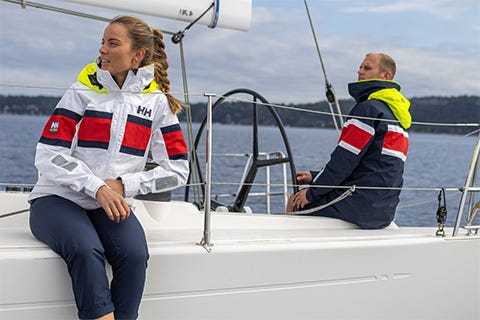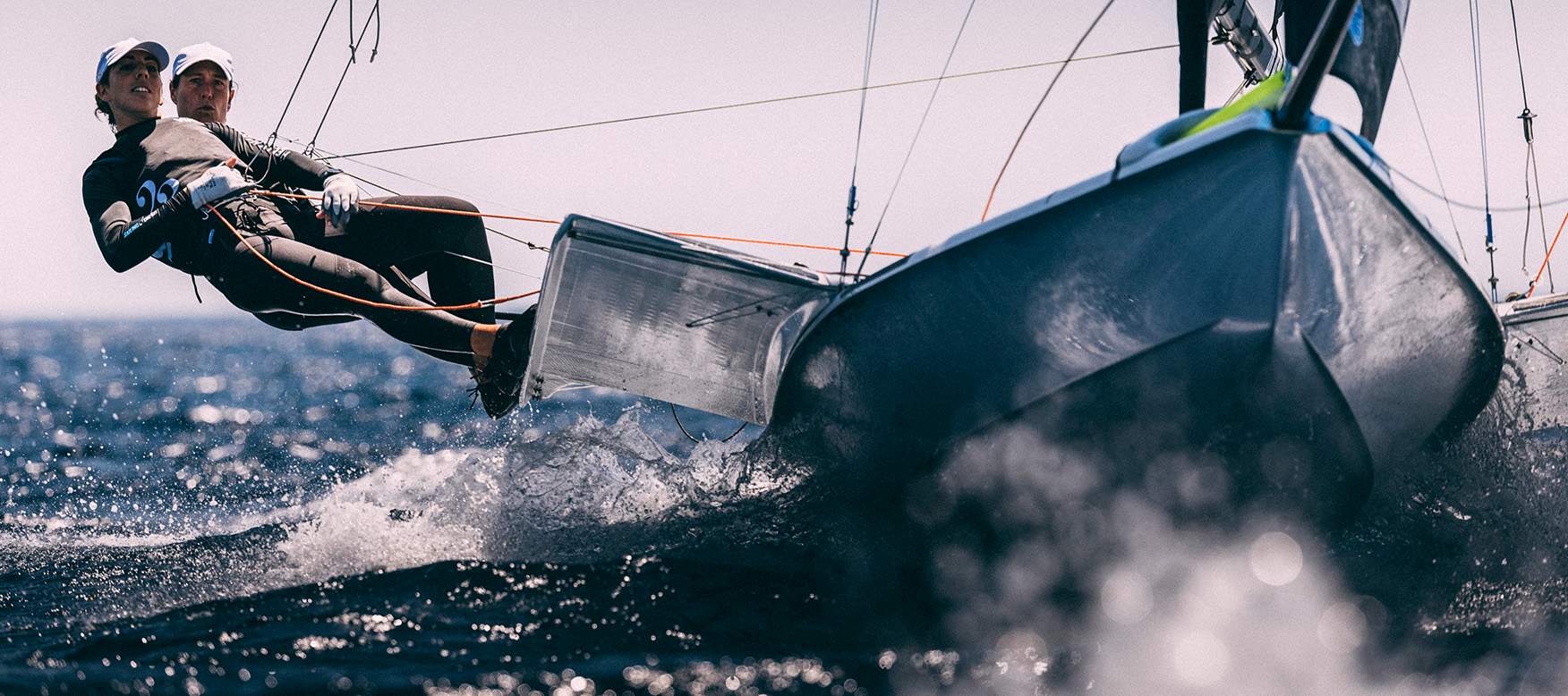
Local Storage seems to be disabled in your browser.
For the best experience on our site, be sure to turn on Local Storage in your browser.
Local Storage seems to be disabled in your browser.
For the best experience on our site, be sure to turn on Local Storage in your browser.

May 15, 2023
Update: March 01, 2024
3 min read
Dinghy sailing takes place close to the shore in relatively warm waters. Still, it's easy to get and cold. The flip side of the equation is staying protected from the sun when you're exposed on the water. We recommend a layered approach, and in this guide, we’ll show you how to layer up for dinghy sailing.
Olympic sailors Marie Rønningen and Helene Næss have warned us that changing temperatures are the biggest challenges for dinghy sailing. As experienced sailors in the “skiff” class for the Norwegian National Sailing Team, they have some tips on what to wear.

Dinghy sailing often involves being fully immersed in water, so it's important to wear layers that can handle getting wet and dry quickly once you're out of the water. With more time in the water comes more exposure to the sun, so it's equally important to shield yourself from damaging rays. Be prepared for a variety of conditions—temperatures can change quickly.
You don’t want to put on too much clothing or too little. This is what we struggle the most with even though we’ve been sailing dinghies for 20 years. If you’re too hot or too cold on the water it affects your concentration, comfort, and maybe even performance.
Often referred to as second skin, base layers are vital to temperature regulation and moisture management. Since your base layer may be the only layer (as you shed clothing on warm days), look for something that works as a rashguard and can protect you from the sun and spray.
An athetlic-cut swimsuit is another favorite for warm days, and it goes well under your wetsuit. We also like the Solen Collection base layers because they're lightweight, quick-drying, and offer UPF protection.
Pro tip: On really cold days, wear a base layer under your wet suit for added warmth.
Because dinghy sailing typically calls for neoprene, you’ll likely wear a midlayer to-and-from the boat, rather than on the water. We wear a windproof jacket with tights on. Find something that is quick-drying, breathes comfortably, and easy to throw on after long days on the water.
The outer layer for dinghy sailing is neoprene. Ultimately, your outer layer should keep you warm without limiting your mobility. Neoprene pants should be durable, and a reinforced seat and knees are a big plus.
Neoprene has the amazing effect of making the water feel warm when you’re in it. The temperature depends on the thickness of the neoprene. We wear thin neoprene on warm days and the thickest neoprene on cold days in places where we know the water is cooler. If the weather falls somewhere inbetween, we use different combinations, doubling up if necessary. The flexibility of neoprene also makes it a great choice for dinghy sailing.
The right footwear for dinghy sailing depends on which boat you sail. We sail in the 49erFX, and look for shoes with:
Pro tip: because you’re mostly on your feet, traction and comfort are key. They should also be quick-drying.
Our number one accessory is a visor/cap! It’s rare that you see us sailing without one. We also bring a good dry bag that we keep in the coach boat. Our coach always jokes with us—it's so heavy because we bring our whole lives with us.
Except for the visor, our life jacket is the most important. It’s mandatory and necessary to wear, and we never question it! Look for a low-profile life jacket that won’t get in your way as you move around the boat.
Editor's note: learn more about how to choose a life jacket and how to maintain your life jacket.
*Life jackets only available in select markets.


April 30, 2024 2 min read
Inshore sailing requires quick-dry materials and lightweight jackets. In this guide we share some top tips on what to wear from seasoned sailor, Mauro Melandri.

March 05, 2024 2 min read
In this quick guide, we cover the three essentials that you need to know when it comes to sailing gear.